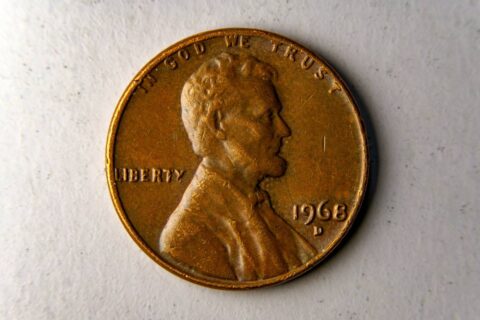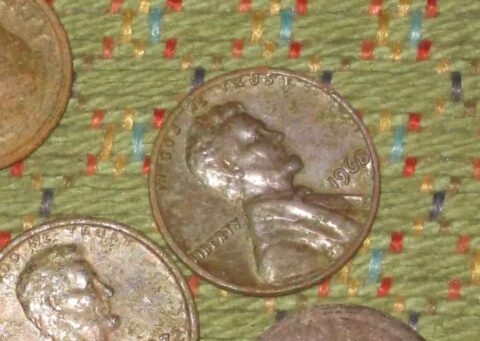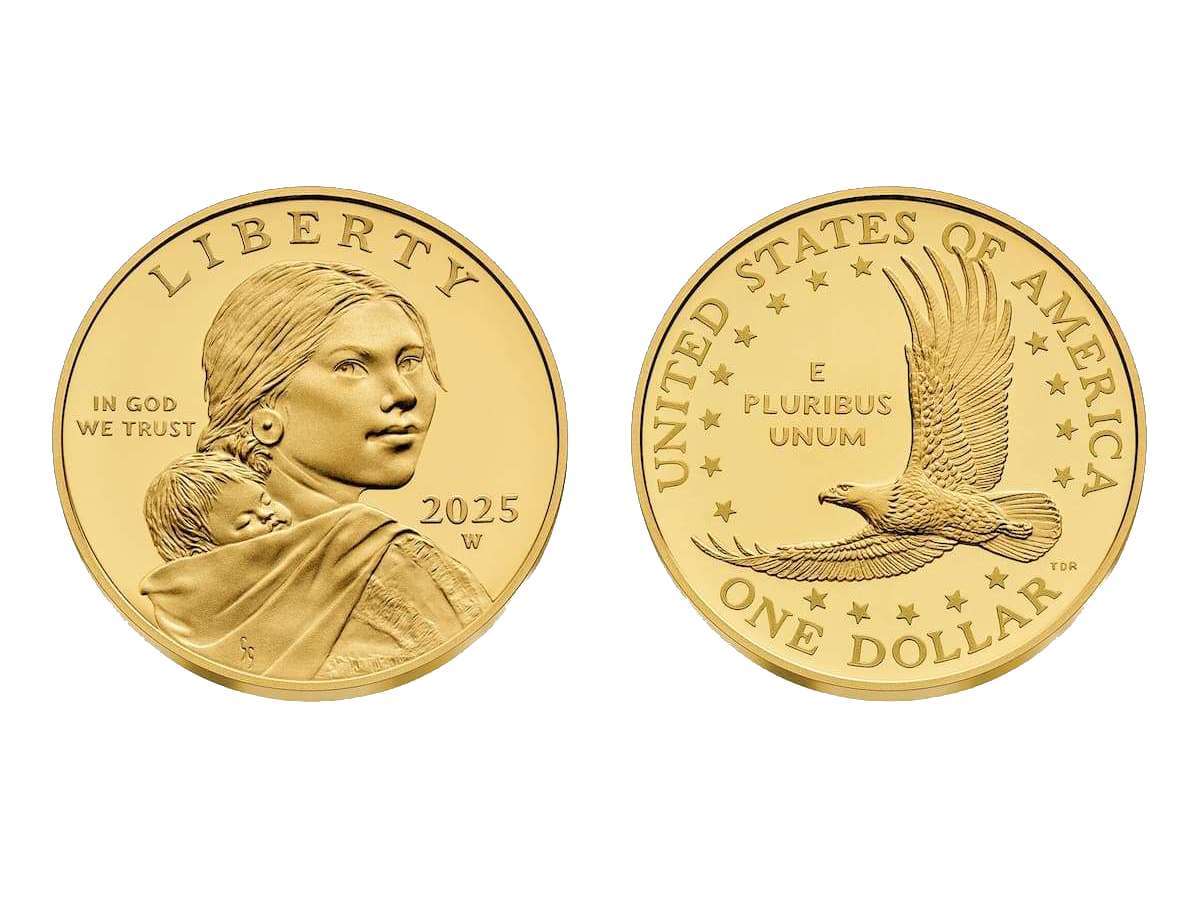
It’s pretty well known that all 1968 pennies are worth more than face value.
So you probably want to know how much over face value yours is worth. Am I right?
The good news is some 1968 Lincoln Memorial cents are worth hundreds — even thousands — of dollars!
Read on to find out how much your 1968 penny is worth…
1968 Penny Value (No Mintmark)
So, let’s get this out of the way right now… Your 1968 pennies without a mintmark are not rare. While you may not find them every day, they are still decidedly common coins.
In fact, the United States Mint in Philadelphia pumped out 1,707,880,970 pennies in 1968. Yes, mathematicians — that’s a number equating to more than 1.7 billion (with a “b”) 1968 Lincoln Memorial cents!
So how come it’s getting to be so hard to find these allegedly common coins in spare change? And why did we start this article by saying they’re all worth more than face value?
That’s because all 1968 pennies are made from a bronze composition consisting of 95% copper, 5% zinc — and copper has really gone up in value over the years. So much so that the amount of copper in any pre-1982 penny is now worth more than its face value!
Here’s how much 1968 pennies without a mintmark are worth:
- Every 1968 penny you find without a mintmark is worth roughly 2 cents — just in metal value alone!
- Uncirculated 1968 pennies without a mint mark (those that were never used as money) are worth 10 to 25 cents apiece.
- The most valuable 1968 penny, graded MS67+RD by Professional Coin Grading Service, sold at a 2018 auction for $2,880!
1968-D Penny Value
The year 1968 marks the first time since 1964 that United States coins carried mintmarks.
The U.S. Mint abolished the use of mintmarks in 1965 to help mitigate the collecting of coins from circulation during a crushing coin shortage. That problem had been solved by 1968, and therefore mintmarks returned.
The “D” mint mark signifies that the coin was made the Denver Mint.
You will find the “D” mintmark under the date of the 1968 penny on the obverse (heads side) of the coin.
In all, the Denver Mint struck 2,886,269,600 (nearly 2.9 billion) pennies in 1968.
Here’s how much 1968-D pennies are worth:
- Like their Philly counterparts, all 1968-D pennies are worth more than their face value due to the copper content in the coin. That means 1968-D pennies are worth about 2 cents — even in worn condition.
- Uncirculated 1968-D Lincoln pennies have a value of around 10 to 25 cents.
- The most valuable 1968-D penny was graded by Professional Coin Grading Service as an MS67RD and sold for $2,300 in a 2008 auction.
1968-S Penny Value
The San Francisco Mint, which placed an “S” mintmark on its 1968 coins, struck 258,270,001 pennies that year.
Of all the circulating 1968 pennies, the 1968-S penny is the one you’ll likely have the toughest time finding. It’s considered a scarce coin — at least scarcer than the Philadelphia and Denver issues from 1968.
Here’s how much 1968-S pennies are worth:
- Like the Philly and Denver pennies from the same period, 1968 pennies from San Francisco are also worth about 2 cents each in worn condition — due to the valuable copper metal content of these coins.
In addition to the fact that people are looking for 1968-S pennies due to their copper content, people have also long been fond of this coin because of its “S” mintmark — which is perceived by many (especially those outside of the hobby) as being particularly valuable. Yes, the 1968-S penny is scarcer than the 1968 no-mintmark penny and the 1968-D penny. However, there is generally no special premium for the 1968-S penny in worn condition.
- In typical uncirculated grades, the 1968-S penny is worth about 15 to 30 cents.
- The most valuable 1968-S penny was graded MS67+RD by Professional Coin Grading Service. It sold in 2015 for $3,995.
1968-S Proof Penny Value
Along with the temporary removal of mintmarks from coins during the mid-1960s, there was also a moratorium on the production of proof sets and uncirculated sets — which were both replaced by a single product known as a Special Mint Set (SMS).
In 1968, the proof set and the uncirculated set returned to the regular U.S. Mint product lineup. But things were a little different when it came to the 1968 proof set, which had traditionally been assembled with coins produced by the Philadelphia Mint.
A new tradition was created in 1968 with the return of the proof set… It was the beginning of the era of San Francisco proof coins bearing the “S” mintmark.
The 1968-S proof pennies were among the first of these new-style proof coins.
The San Francisco Mint struck 3,041,506 specimens of the 1968-S proof penny. While these limited-edition coins intended for collectors were made in relatively small numbers, they remain plentiful today.
Here’s how much 1968-S proof pennies are worth:
- The typical 1968-S proof penny is worth around $1.
- The most valuable 1968-S proof Lincoln cent received an especially stellar grade of PR69DCAM by Professional Coin Grading Service and sold for $3,795 at a 2002 auction.
IMPORTANT: What Is The Grade Of Your 1968 Penny?
To determine the true value of your 1968 Lincoln cent, you first need to know what condition (or grade) your coin is in.
Grab a coin magnifier and a copy of the U.S. Coin Grading Standards book. Then, watch this video to see how to grade coins yourself at home:
These coin grading apps are super helpful, and they make grading coins yourself even easier.
Rare 1968 Error Pennies And Their Values

If you notice anything weird about your 1968 penny, be sure to hold on to it — it might be a rare penny error or variety worth lots of money!
However, not all strange things on coins are real errors — and, frankly, even among errors there are some that are worth much more than others.
So, which 1968 penny errors are valuable and can be found in pocket change?
Here’s a rundown…
- 1968 Doubled Die Penny — This is the biggie! It’s the rare and valuable penny error that is usually worth big bucks. While there isn’t a 1968 doubled die penny error as valuable as the 1955, 1969, or 1972 doubled die pennies at this time, there are still some more obscure 1968 doubled die pennies that are worth money! You should pay close attention to the lettering on the 1968 penny, as well as in details such as Lincoln’s eye, beard, and ear, and bowtie — those are the places collectors generally find signs of doubling. Many of the 1968 doubled die penny varieties are worth $25 to $100, depending on the magnitude of the doubling.
- 1968 Repunched Mintmark Penny — In the late 1960s, U.S. Mint coiners individually hand-punched mintmarks onto each working die. This human element naturally led to occasional errors and varieties involving the mintmark. Repunched mintmark varieties are fairly common and many coin collectors seek these coins out. A 1968-D or 1968-S repunched mintmark penny typically sells for between $5 and $15, depending on the magnitude of the mintmark aberration and the condition of the coin.
- 1968 Penny With Die Breaks — One way that a die might show wear and tear is through breaking, which leads to cracks on the affected die and raised lines, squiggles, lumps, and bumps on the coin it strikes. Die breaks and die cracks are eye-popping errors. Depending on the type, size, and location of the die crack, the values can range widely. One of the most common types of die breaks on a Lincoln penny is the so-called “BIE” variety — which shows a short vertical die break between the letters “B” and “E” in the inscription “LIBERTY” on the obverse. Many BIE pennies are worth $5 to $10 apiece.
- 1968 Floating Roof Penny — Many people write in asking about floating roof pennies, which appear to show the top portion of the Lincoln Memorial roof hovering above the rest of this Washington, D.C. landmark. The floating roof effect is most likely caused by overzealous die polishing in the upper-central portions of the reverse (tail’s side) of the coin. While this floating roof quirk can potentially be found on any Lincoln Memorial cent which was struck from 1959 through 2008, this oddity is seemingly most common on Lincoln pennies of the late 1960s. Most floating roof Lincoln pennies trade for $1 to $5. Interestingly, the floating roof pennies aren’t widely recognized yet as a type of die variety by many of the coin collecting authorities. But stay tuned — this could change in the future!




